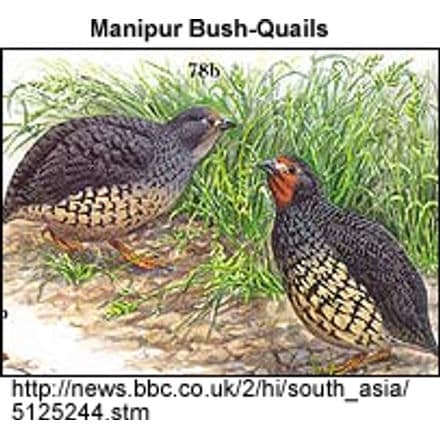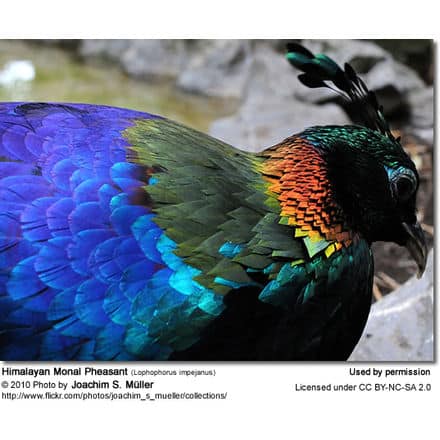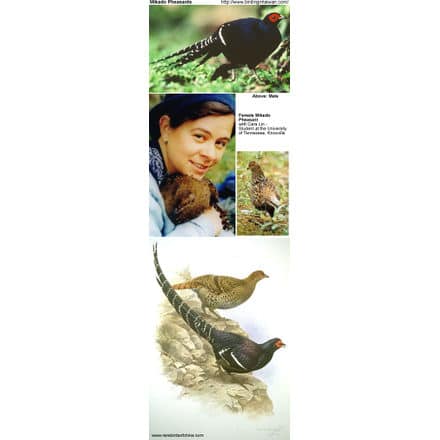Blood Pheasant (Ithaginis cruentus)
The Blood Pheasants (Ithaginis cruentus) is the only species in the genus Ithaginis of the Pheasant family.
There are 15 different subspecies:
Himalayan Blood Pheasant (Ithaginis cruentus cruentus) – nominate species
- Sikkim Blood Pheasants (Ithaginis cruentus affinis)
- Tibetan Blood Pheasants (Ithaginis cruentus tibetanus)
- Kuser’s Blood Pheasants (Ithaginis cruentus kuseri)
- Mrs. Vernay’s Blood Pheasants (Ithaginis cruentus marionae)
- Greenway’s Blood Pheasants (Ithaginis cruentus holoptilus)
- Rock’s Blood Pheasants (Ithaginis cruentus rocki)
- Clarke’s Blood Pheasant (Ithaginis cruentus clarkei)
- Geoffroy’s Blood Pheasant (Ithaginis cruentus geoffroyi)
- Bianchi’s Blood Pheasant (Ithaginis cruentus michaelis)
- Beick’s Blood Pheasant (Ithaginis cruentus beicki)
- Mrs. Sage’s Blood Pheasant (Ithaginis cruentus annae)
- Berezowski’s Blood Pheasant (Ithaginis cruentus berezowskii)
- David’s Blood Pheasant (Ithaginis cruentus sinensis)
The Blood Pheasant is the state bird of the Indian state of Sikkim.
Distribution / Habitat:
These pheasants originate from the Himalayas, ranging from Nepal through Tibet into northern Burma to northwest China.
Their preferred habitat is coniferous or mixed forests and scrub areas right at the snowline. These pheasants move within their range depending on the seasons and during the summer are found at higher elevations.
Populations move to lower elevations as the snow increases in the fall and winter.
They are good runners but poor fliers.
Description:
Males average 1.5 feet (43 cm). The female is a little smaller, with a length of 1.3 ft. (39 cm).
This species’ name comes from the fact that the males have vivid red coloring on the feathers of the breast, throat, and forehead.
Females are more uniformly colored with duller shades of reddish brown. Both males and females have a distinct ring of bare skin around the eye that is crimson-colored, in addition to red feet.
Subspecies are determined by varying amounts of red and black feathers.
Status:
Status in Wild: Being native to remote areas, this species has not been subject to the problems other pheasant species had to face, specifically hunting and habitat destruction. While not much is known of its actual status in the wild, it remains unthreatened and stable.
Aviculture: To my knowledge, there are no Blood Pheasants in captivity in America. The species has been recently bred in Belgium by François Bernar.
Breeding / Nesting:
These pheasants are of breeding age when they are one year or older. Between late April and early May, the female builds a shallow nest under paddy straw heaps surrounded by pine, fir, and willow trees; in shrubs; under rocks; by fallen trees; or in tree holes near the ground.
For the construction of the nest she uses dry twigs lined with leaves; or of leaves, thin tree roots, and mosses; piled up and then pressed and decorated with usnea outside; or of paddy straws and leaves, wormwood, pine needles, mosses and dry twigs lined with belly feathers.
In the wild, these pheasants have a habit of moving the eggs or deserting the nest if at risk.
A clutch may contain up to 14 eggs (although the average is 6 to 7 eggs). The hen incubates them for 27 – 29 days, while the male guards the nest. The eggs are long and oval, varying in size; pink or yellowish white with dark brown or rufous speckles.
The chicks were seen in mid-June. They can follow their mother around to feed at two days old.
They are a difficult species to breed, and yet they are gaining popularity in aviculture.
Diet:
They prefer green foods and in the wild, they eat mostly lichens. They pick up food with their bills and seldom dig for food with claws.
Voice / Call:
- male’s display call: “Jijiji”
- calling: “si-si-si”
- responding: “Jueqi, jueqi”
- alarming:”ju-ju-ju-ju”
- territorial or aggressive call: “si-“
Other Releated Web Links: Pheasant General Information … Pheasant Species … Pheasant Taxonomy … Breeding Pheasants … Pheasant Photo Gallery … Housing Pheasants … Pheasant Diseases




